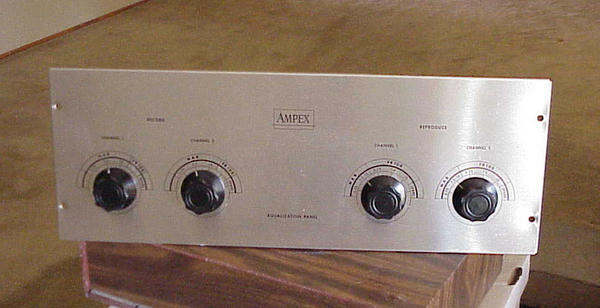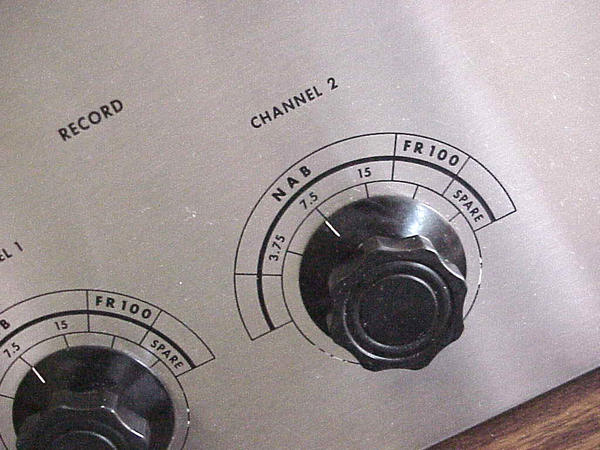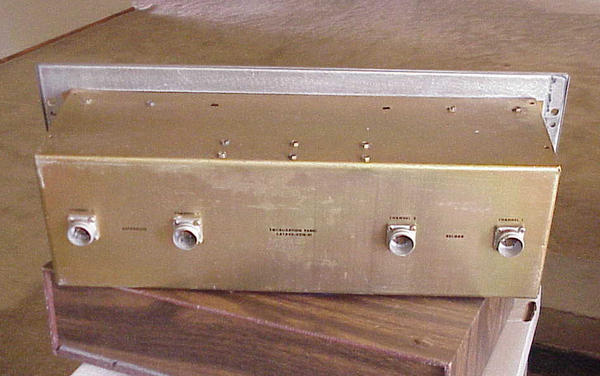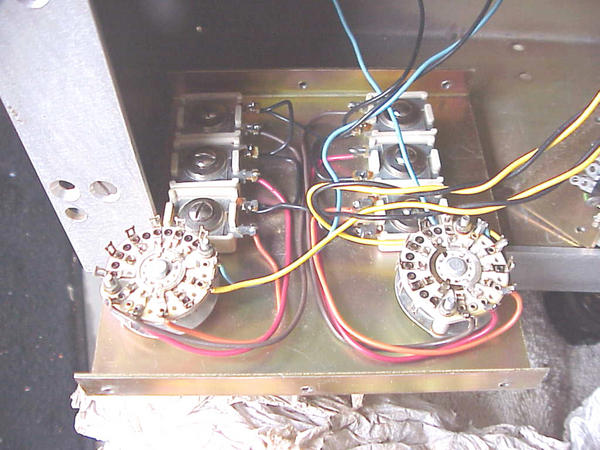First, I'm brand new to the site, I have read some of the fine threads and it all looks good. I'm recently retired, had a medium sized Music store for a long time. Lots of tube gear still around.
Specifically> I own an Ampex 351 with 2 amplifers and this box which is labeled
~ Equalization Panel ~ It has two Record channels and two Reproduce and each has NAB setting for various speeds and the Ampex in house EQ choice also. I have never seen another one of these? I've Googled it some and watched on ebay and yet this seems to be a very quiet item. It is not in the Manual I have for the 351. Operation is intuitive but I am just wondering if fellas who have much more studio experience recognize it? Is it needed or an option etc...
thanks for the posts.
Bret
Comments
Fascinating! I have never run into anything like this before.
Fascinating! I have never run into anything like this before. It is very interesting that it allows for 3 speeds....351s and other Ampex machines of this vintage always had only 2 speeds. Have you opened it up to see what is inside? I assume that it is passive.....but that is just a guess.
"Record" section has three separate NAB, and one FR100. "Reprodu
"Record" section has three separate NAB, and one FR100. "Reproduce" has two NAB (7.5-15 shared) and three separate FR100. WTF? Definitely "RTFM" material on that thing, if you could find it.
If it turns out to be useless these days, and not even "museum worthy", would make a cool project box for something else. You could even mount it under all your Behringer Ultragains to match! (Just make sure you put a couple of near-worthless tubes in it, and backlight them with some orange-yellow LEDS to make it appear that they are doing something!)
Kapt.Krunch
I'm still investigating the unit. I'll get it open this afterno
I'm still investigating the unit. I'll get it open this afternoon and post some pics. The 351-2 was purchased surplus from a military source years ago. They recorded data mostly... so this may be involved with that somehow?
I am deciding what exactly to do with the pair of 351 amps. I don't want to go back to a transport, I'd rather develop a hybrid to digital set up... and to that end I'm reading here. Goes slow:)
I did get some more internal pics. And, I have good reason to be
I did get some more internal pics. And, I have good reason to believe the unit is oriented to data collection, not audio signals. Probably not worth much in an audio setting. Want to track rockets, colect data on tape? Yup this is the one apparently.
At the beginning of the space race, 3M & Ampex made FSK analog d
At the beginning of the space race, 3M & Ampex made FSK analog data recorders. Some were actually FM-based recording systems that didn't need a erase head because they recorded at full saturation. And the distortion made them unusable for standard audio recording. This may have been from a unit that could double as both a NAB recorder/player and FSK? It sure didn't come from an Ampex 3200 series reel to reel duplicator. And those units basically utilized the Ampex 300 transports. And not the 350/351's. I vaguely remember the F R-100's? Which I believe stood for the FM recorder? So you could still use it as a playback machine, and therefore the different equalization standards were made available for the three popularly used speeds of the era. The connectors on the back of your unit look like they were intended for the head stack cables? But I don't believe this was the case for this particular unit and the FR 100? I was a factory authorized Ampex service technician, but only for the 440-MM 1000/1100/1200 series of modern transistorized recorders. And I've got a boatload of old tube Ampex manuals that don't reflect this unit. But I do remember the FR 100 as being a data recorder. Yup, tracking satellites and/or missiles as data recorders. I had a similar 3M unit for a short while that was, 14 tracks, FM and ran at speeds of 15/16, 1 7/8, 3&3/4, 7.5,15, 30, 60 and 120 IPS. No tape lifters! 3M iso-loop A wind tape, which is oxide out. Where all studio recorders are oxide in B-wind. I was going to convert that machine into a usable multi-track recorder, when I was just 19. Unfortunately this over 300 pound beast ripped a hole in mom's hallway carpeting. LOL. Then she made me get rid of it! Boo-hoo, but she really did me a favor. No tape lifters and oxide out wasn't exactly what I wanted for a multitrack recorder. So I had to wait to get the MCI JH 10-16 from Curtis Mayfield's former studio. At least that was on casters, even if it couldn't get through the doorways. LOL.
Radio Shaft utilized cassette recorders in their early computers to store data as FSK (frequency shift keying).
Mx. Remy Ann David













You might try linking this request to the Ampex list serve. Lots
You might try linking this request to the Ampex list serve. Lots of former Ampex employees on the forum. Here is the email address ampex@recordist.com. I have used a lot of 350, 351 and AG440s and have never seen this panel. I am wondering if it was for a duplicator or the older 300? Or this might have been a special build for someone. If you look up FR100 you get some information on Instrumentation Recorders. Maybe this was a way to record audio on an instrumentation recorder???? Ampex did do a lot of special custom work for certain companies. You might have a real oddity on your hands. The Amphenol connectors on the back suggest more instrumentation than audio related. Let us know what you find. Thanks!